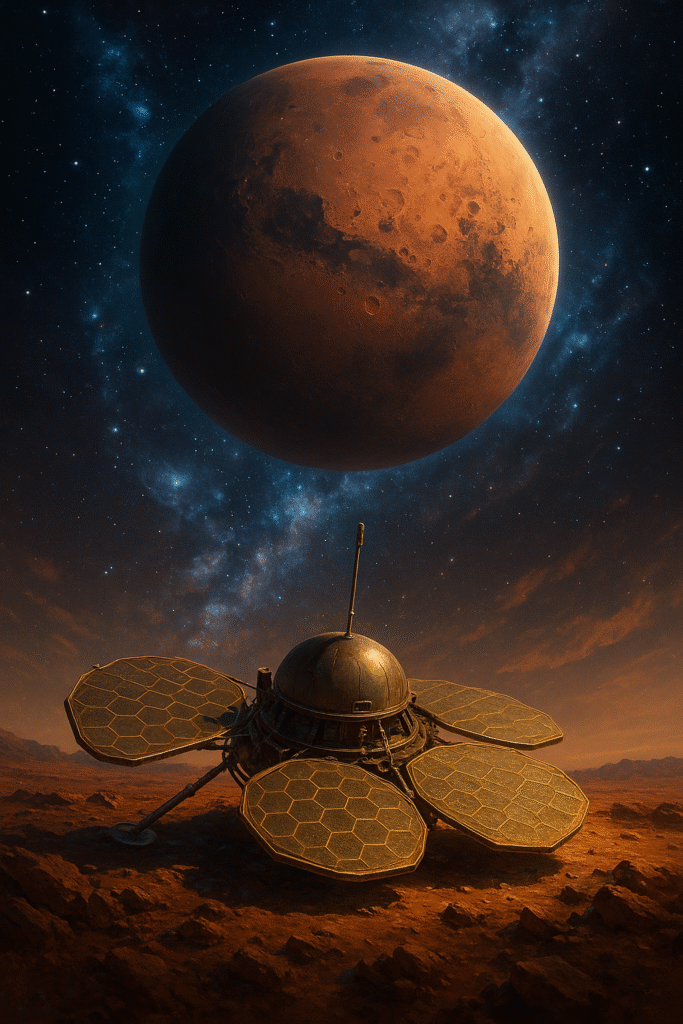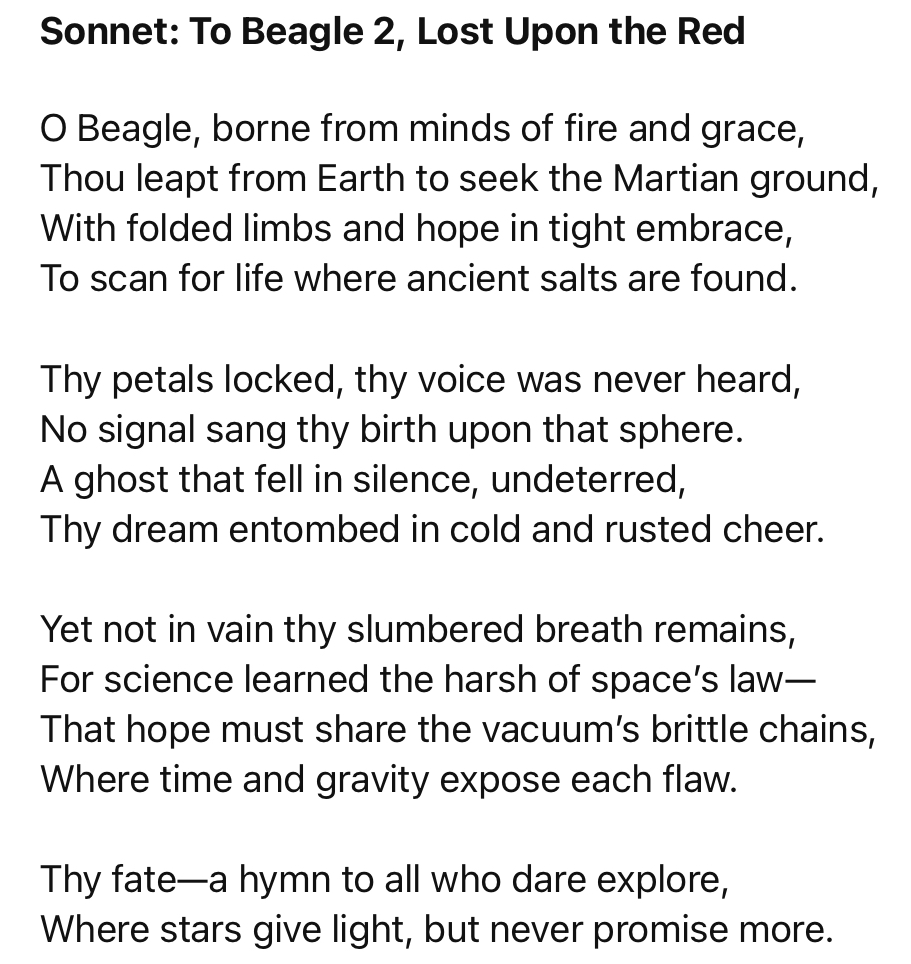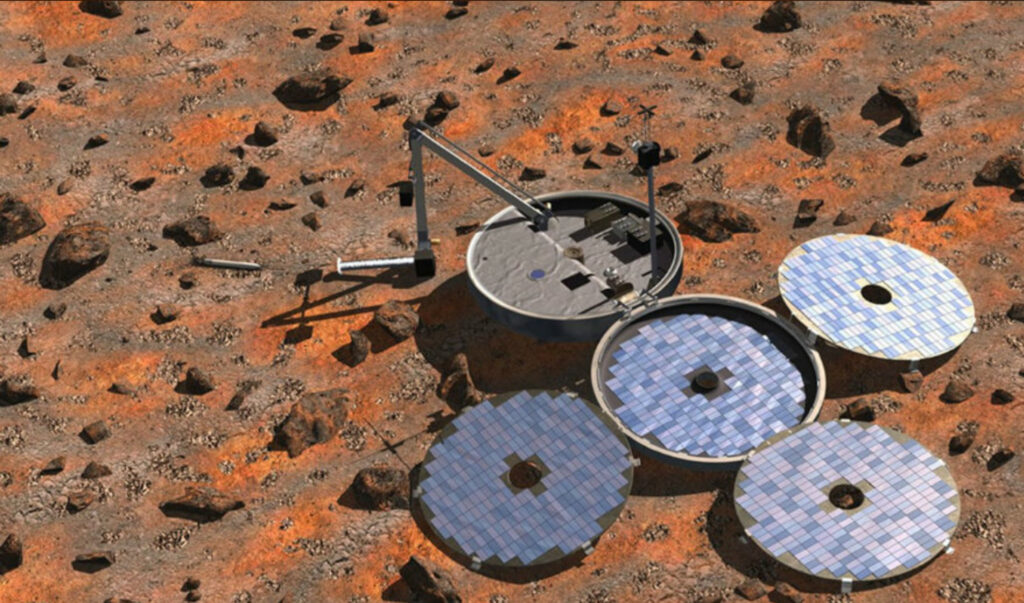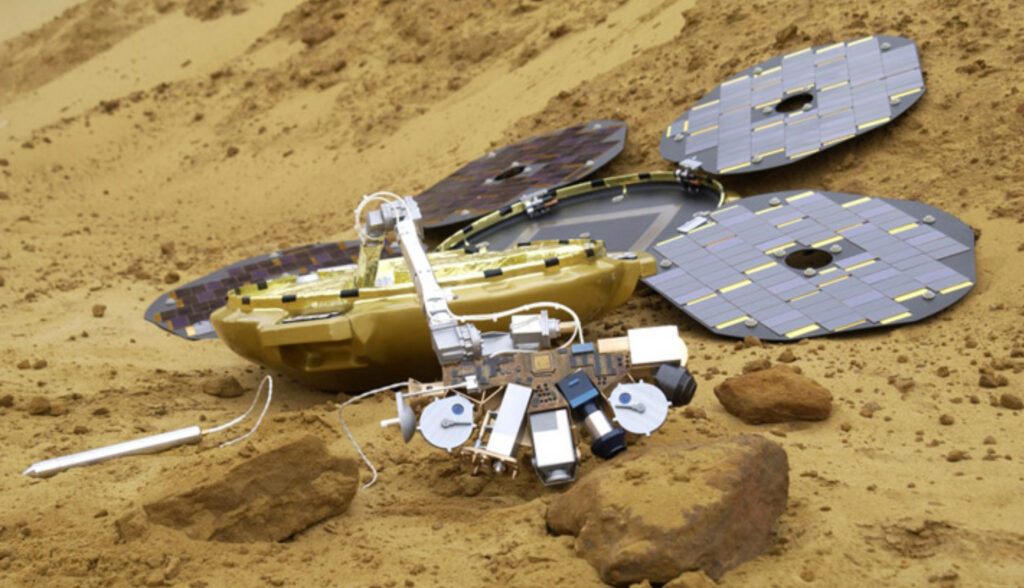
ChatGPT:


Beagle 2: A Tale of Ambition, Loss, and Rediscovery on Mars
In the annals of space exploration, few stories encapsulate the blend of human ingenuity, ambition, and the harsh realities of interplanetary missions as vividly as the saga of Beagle 2. Conceived as the United Kingdom’s first mission to another planet, Beagle 2 was a testament to the vision of its principal investigator, Professor Colin Pillinger, and a symbol of Britain’s aspirations in space science.
Genesis of a Mission
Beagle 2 was named after HMS Beagle, the ship that carried Charles Darwin on his voyage of discovery. This homage was fitting, as the mission’s primary goal was to search for signs of past or present life on Mars. Developed under the aegis of the European Space Agency’s Mars Express mission, Beagle 2 was a compact lander, designed to carry out astrobiological studies on the Martian surface.
Professor Colin Pillinger, a planetary scientist at the Open University, spearheaded the project. His passion and determination were instrumental in bringing together a consortium of academic and industrial partners, including the University of Leicester and EADS Astrium UK. Pillinger’s charismatic leadership and ability to garner public interest were pivotal in securing funding and support for the mission.
Design and Objectives
Beagle 2 was an engineering marvel of its time. Weighing just 33.2 kilograms, it was equipped with a suite of scientific instruments, including a robotic arm, a “mole” for subsurface sampling, and various spectrometers to analyze soil and rock compositions. The lander’s design featured a unique “pocket-watch” configuration, with solar panels arranged in a petal-like fashion that would unfold upon landing.
The mission aimed to land in Isidis Planitia, a large plain near the Martian equator, on Christmas Day, 2003. Once on the surface, Beagle 2 was expected to conduct experiments to detect organic compounds and other indicators of life, as well as study the planet’s geology and climate.
The Silence After Landing
On December 19, 2003, Beagle 2 was successfully released from the Mars Express orbiter. However, after its scheduled landing on December 25, no communication was received from the lander. Despite repeated attempts to establish contact, the mission team was met with silence. By February 2004, the European Space Agency declared the mission lost.
The lack of data left scientists and engineers puzzled. Without telemetry, it was impossible to determine whether Beagle 2 had crashed, failed to deploy its instruments, or encountered another malfunction. The mission’s apparent failure was a significant blow to the UK’s space ambitions and to Professor Pillinger personally.
Rediscovery on the Martian Surface
For over a decade, the fate of Beagle 2 remained a mystery. Then, in January 2015, NASA’s Mars Reconnaissance Orbiter, equipped with the High Resolution Imaging Science Experiment (HiRISE) camera, captured images that revealed the lander’s resting place on Mars. The photographs showed that Beagle 2 had indeed landed safely but had failed to fully deploy its solar panels, which likely obstructed its communications antenna.
This discovery vindicated the engineering efforts behind the mission, demonstrating that the lander had survived the perilous descent through the Martian atmosphere. The partial deployment suggested that Beagle 2 had come tantalizingly close to achieving its objectives.
Legacy and Influence
Although Beagle 2 did not fulfill its scientific goals, its legacy endures. The mission showcased the UK’s capability to design and build interplanetary spacecraft, inspiring future projects and collaborations. The lessons learned from Beagle 2’s development and deployment have informed subsequent missions, emphasizing the importance of rigorous testing and redundancy in spacecraft design.
Professor Colin Pillinger’s role in the mission cannot be overstated. His dedication to public engagement brought space science into the mainstream consciousness in the UK. Pillinger’s efforts to involve artists and musicians, such as commissioning the band Blur to compose a call sign for Beagle 2, exemplified his innovative approach to science communication.
Tragically, Professor Pillinger passed away in May 2014, just months before the lander’s rediscovery. His contributions to planetary science and his indomitable spirit continue to inspire scientists and engineers worldwide.
Conclusion
The story of Beagle 2 is one of ambition, innovation, and resilience. While the mission did not achieve its intended scientific outcomes, it stands as a testament to human curiosity and the relentless pursuit of knowledge. The rediscovery of the lander serves as a poignant reminder of the challenges inherent in space exploration and the enduring impact of visionary individuals like Colin Pillinger.
References:
- ESA – Beagle 2 lander
- Beagle 2 – Wikipedia
- Colin Pillinger – Wikipedia
- Mars orbiter rediscovers long-lost Beagle 2 lander
Note: This article is based on information available from the European Space Agency, NASA, and other reputable sources.

